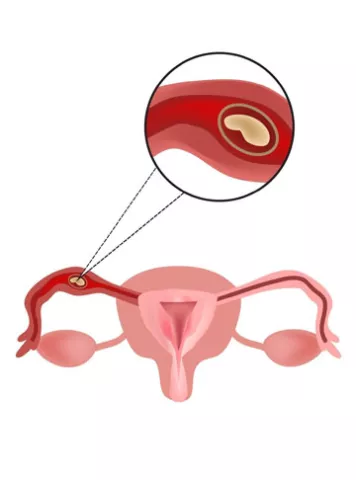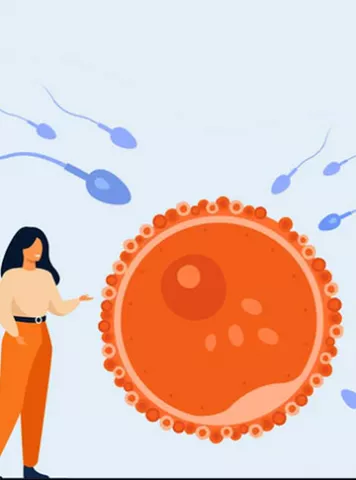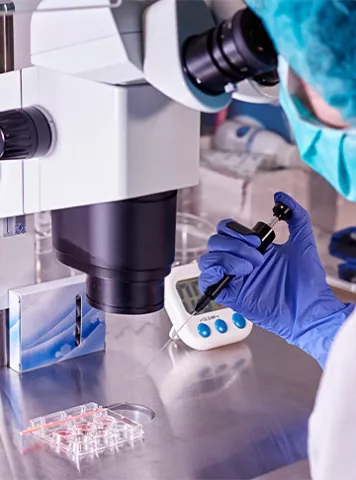Author Name: Dr. Gaurav Satyadeo Sharma || Mentor Name: Dr. Arvind Vaid on April 27, 2020
ART (assisted reproductive technology) has proved to be a boon to the infertile couples. A few decades ago an infertile couple would spend their entire life longing for a baby if traditional methods did not yield a result. With the advent of ART almost any problem of infertility can be tackled effectively. Let’s get to basics first.
What is ART?
It is a procedure in which multiple follicles are developed in the ovaries of a female. These eggs that are retrieved from these follicles can then be fertilized using traditional IVF (in vitro fertilization) technique or ICSI (intra cytoplasmic sperm injection).
During this process multiple embryos may be formed. The embryos thus formed are then transferred into the uterine cavity at a specific time of the menstrual cycle. When the embryo gets implanted in the uterus it leads to pregnancy.
Not all embryos which are transferred into the uterine cavity lead to pregnancy so many clinicians used to prefer transferring multiple embryos so that at least one of them would get implanted. Major criticism of ART has been multiple pregnancies that result due to multiple embryo transfer. Multiple pregnancy is a high-risk pregnancy which can endanger the life of both mother and the baby.
To tackle this problem, the clinicians around the world started doing single embryo transfer (SET). But this led to another criticism: lesser success rate! To have the best of both worlds, it becomes pertinent to select the best embryo and then perform single embryo transfer. And that leads to a big question ‘how to decide which embryo can be selected’.
Before coming to the embryo selection criteria and techniques. Let us first understand why every embryo doesn’t lead to pregnancy. While there are many causes which directly influence the implantation rate, one of the most important causes is aneuploidy. Aneuploidy means abnormal number of chromosomes in the embryo.
Aneuploid embryos can lead to implantation failure, early first trimester abortions and even congenital anomalies. So, if we can exclude the aneuploid embryos and transfer the euploid embryo, the pregnancy rates and take home baby rates will be greatly enhanced.
Let’s understand the various methods of embryo selection. Morphological embryo grading is the most commonly used technique used to select the embryos. The embryo morphology and the speed of growth of embryo are studied. Various morphological parameters that are studied after fertilization are number of pronulei at 17-22 hours, cleavage at 22-28 hours, number of blastomeres at day 2 and day 3 and fragmentation of embryo (measured in percentage) at day 3. The benefit of morphological evaluation is that it is a fairly easy method and cost effective. But the drawback is that even the morphologically normal looking embryo can have aneuploid chromosomes.
Time lapse monitoring is a technique by which the embryo placed inside chambers under optimal conditions is constantly monitored under an embryoscope (a type of microscope). The assessment of cellular dynamics during this monitoring helps in assessing the health of the embryo.
Blastocyst formation is another way of selecting the embryos from the pool. When embryos are cultured beyond day 3, the cells divide continuously and reach an advanced stage of almost 100 cells by day 4. This is called as morula stage. In next one or two days a fluid filled cavity is formed inside the cell mass. This stage is called as blastocyst.
It has three parts outer trophectoderm, inner cell mass and fluid filled cavity. Most of the embryos which are aneuploid do not grow till this stage and undergo growth arrest. So generally, aneuploid embryos are excluded at blastocyst stage.
Around 45% embryos are eliminated by this technique of embryo selection. Blastocysts are graded upon the morphological characteristics of trophectoderm, inner cell mass and size of the embryo. Although this is the most widely used method of embryo selection, it is not full proof. Studies have shown that blastocysts can also have aneuploid chromosomes.
Preimplantation genetic screening (PGS) and preimplantation genetic diagnosis (PGD) are methods where biopsy is taken from the trophectoderm of the blastocyst and it is subjected to further testing. In PGS, chromosome number is evaluated to rule out trisomies of 21, 18 and 13 chromosomes. Though this technique is highly advanced but the problem is that there is compartmentalization of cell mass in the embryo. Abnormal cells are shown to be present in compartments of the cell mass. So, during biopsy if that particular compartment is biopsied, it will lead to false positive diagnosis of aneuploidy.
In PGD, specific single gene faults are assessed. In case any particular disease is inherited in the family, scientists prepare a DNA finger print of that disease and then that DNA fingerprint is compared to the DNA fingerprint of the embryo to rule out that disease. FISH (fluorescence in-situ hybridization) is a technique that is used to assess the chromosomes. The drawback is that about 12 pairs of chromosomes out of 23 pairs can be assessed by FISH. So, it leads to almost 40 percent incorrect results.
CGH (comparative genome hybridization) and SNP (single nucleotide polymorphism) array and NGS (next generation sequencing) are more advanced techniques which overcome the short comings of FISH and give reliable results. The problems with these techniques are that they are invasive techniques and might lead to loss of embryo due to damage during embryo biopsy. The other drawback is that they are time consuming, require sophisticated infrastructure and highly trained personnel.
To overcome the drawbacks of invasive techniques, lately a lot of focus is being given to non-invasive testing called as onomics. In this technique, the various compounds released by the growing embryos in the media are studies. In proteonomics, the proteins like sHLA-G
(soluble human leucocyte antigen G) is studied. Presence in sufficient quantities indicates that the embryo has higher chances of implantation and a healthy baby. In transcriptonomics , the mRNA of the proteins released in the media is studied. The amino acids depletion in the culture media also gives an insight about the health of the embryo. Though these studies are in nascent stages but they have shown promise.
So, there are various methods to select the best embryo during ART but it depends upon the facilities and infrastructure. In a country like India the selection is still largely by morphological characteristics and blastocyst culture. The advanced techniques are slowly but surely gaining foothold in the larger metro cites due to better availability of trained personnel and infrastructure. The selection of best embryo is correctly labelled as most important parameter for ART success when SET is to be done.
Articles
2023


Guide to infertility treatments IVF
एक्टोपिक प्रेगनेंसी के लक्षण, कारण और इलाज
प्रेगनेंसी की खबर महिला को का�...
2023


IVF Guide to infertility treatments
टेस्ट ट्यूब बेबी का खर्च कितना आता है (What is the test tube baby cost in hindi)
पिछले कुछ वर्षों में टेस्ट ट्�...
2023


What Causes High Estrogen in Women
Estrogen is a very important hormone in a female’s body. It is especially ne...
2023


How early can a pregnancy be detected in IVF?
The happy news of pregnancy arrives after the successful completion of the fer...
2022


Guide to infertility treatments IVF
थाइरायड असंतुलन के कारण हो सकती है निःसंतानता, आईवीएफ से कैसे हो सकता है।
पिछले कुछ वर्षों में थायराइड �...
2022


पुरूष निःसंतानता का एक कारण वेरिकोसिल आधुनिक तकनीकों से संभव है पिता बनना
पुरूष निःसंतानता शब्द कुछ सा�...


गर्भधारण के लिए कितनी होनी चाहिए शुक्राणुओं की संख्या
निःसंतानता एक ऐसी समस्या बनत�...
2022


आईवीएफ क्या है (IVF Kya Hai) डिटेल में जानिए, आईवीएफ में कैसे होता है गर्भधारण
समय के साथ हमारी प्राथमिकताओ�...
Pregnancy Calculator Tools for Confident and Stress-Free Pregnancy Planning
Get quick understanding of your fertility cycle and accordingly make a schedule to track it
















